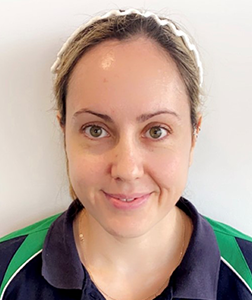
Jacklyn O’Boyle
COVID-19 has and still is impacting Allied Health Service delivery in Australia and with the support from other health professionals in the Northern Territory (NT) we were keen to further investigate the impact of COVID 19 on service provision in the NT.
On the 23rd March Patches Therapy made the decision to cease all non-urgent face to face services effective from the 25th March 2020. As an Occupational Therapist and an Allied Health Team Leader working within a multidisciplinary setting, there was a range of feelings when the realisation of delivering therapy without being in the same room as a client was required. Changing therapy delivery following 10 years of direct contact was somewhat a daunting prospect, as well as setting up a home office.
I have a full physical disability case load with telehealth seeming like an intimidating task due to the hands-on assessment and therapy that is required. Luckily, I know many of my participants well as I have been working in Darwin for over 6 years and I was able to ensure they were set up prior to moving to telepractice. This was done via urgent face to face sessions (following all infection control polices and procedure) to ensure orthosis and all assistive technology were meeting requirements.
Moving to telepractice was a mandatory decision made by Patches Therapy to keep our staff and participants safe. As a national company with offices across the NT and WA the ability to work online for telepractice was well supported by our already established IT systems.
It was anticipated telepractice would not be a smooth transition, both from a technology and a therapeutic service delivery standpoint. General worries included; How can we provide direct therapy? How can we get parents/ carers/ guardians on board? How can we achieve the therapy goals? And clinicians worry about having no previous experience delivering telepractice. However, we had great support and Patches provided telepractice training within two days of moving to telehealth which assisted us all to move forward with confidence.
The first sessions were tricky and this was mainly due to not having the best set up in the participants home however it was a great opportunity to support parent/guardians/ participants to set it up for their next session. It re-focused therapists to work withing a parent coaching model which is known to be best practice for Early Intervention. I was able to offer resources on loan to families especially when providing specific therapy e.g. Bimanual therapy, and support parents on appropriate activities to buy/ make/ find in their home.
Telepractice enabled parents to work on goals in their own home without the added stress of travelling. It also enabled therapists to assess the home environment for potential barriers that are not always evident in clinic sessions. There seemed to be a sense of autonomy, confidence, and motivation from parents, guardians, and participants, as they were encouraged to lead the session, set it up, and tell us what they want to work on.
I completed a mix of parent coaching and direct therapy and enjoyed developing my telepractice skills. I now feel confident and comfortable with offering telepractice. It was also important to reflect on times when things were not going well in telepractice and having these open discussions with parents, guardians, and participants. It did help to be well prepared for the sessions e.g. sending an email to families to remind them what we have agreed to work on and what needs to be set up.
To read more about the impact of COVID-19 in the NT please see the link below to a commentary article, ‘The Impact of COVID-19 on Professional Practice in the Northern Territory, Australia’. It was published on the 14th October 2020 by American Speech-Language-Hearing Association Journals. It describes the clinical context from the perspective of health professionals in the Northern Territory, and the concerns and changes in practice brought forth by COVID-19. It provides an overview of the local response, which has included a shift to telepractice, and discuss the merits and potential issues of telepractice service provision in remote and very remote Australia.
